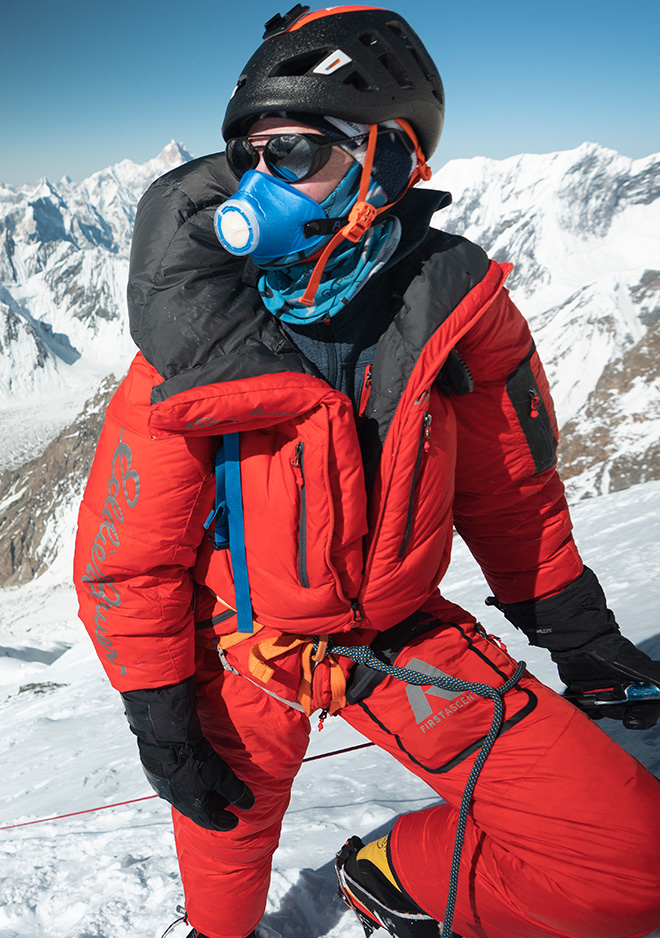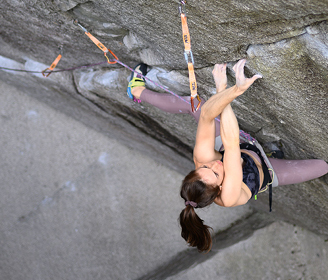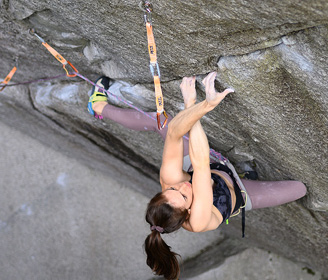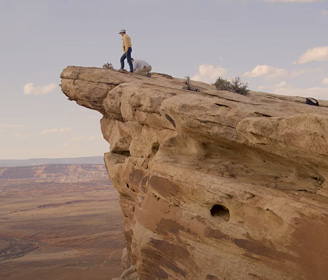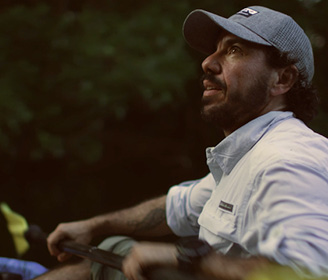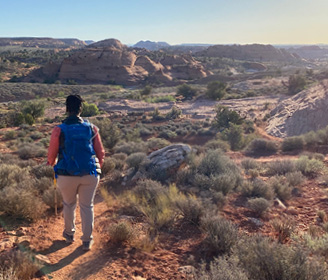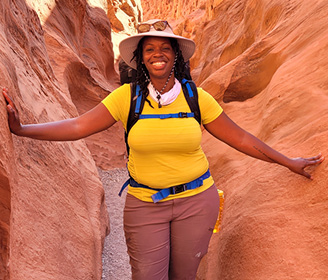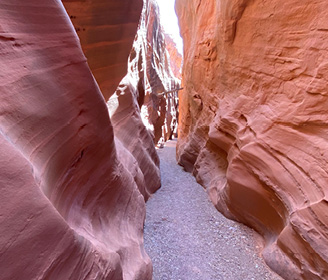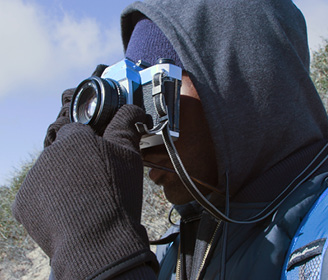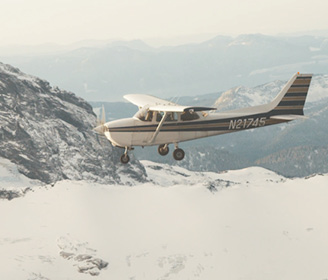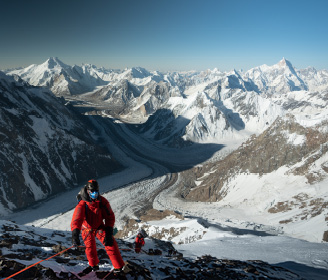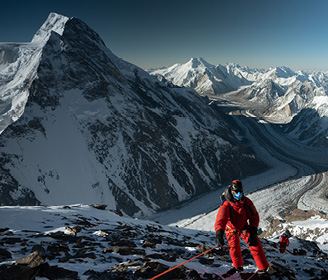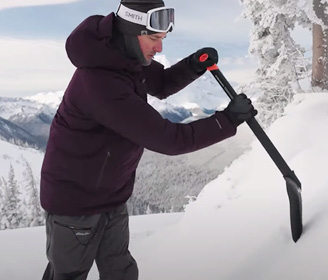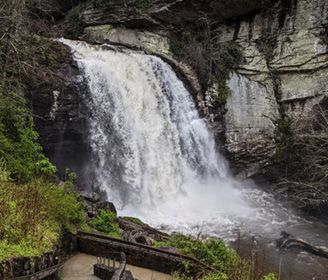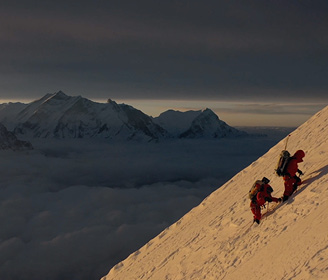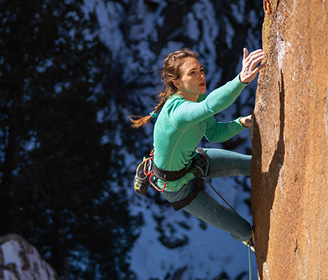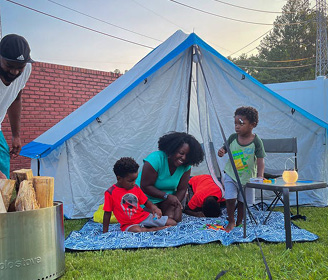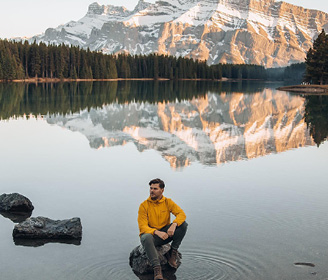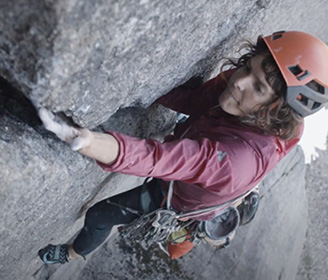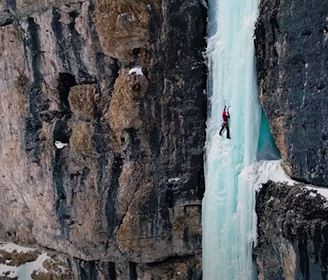
Ever wonder, ‘How to get into Rock Climbing?’ or ‘Where to go Rock Climbing?’ or even ‘What is Bouldering?’ Learn about these facts and the most frequently asked questions about the sport of Rock Climbing. Listen in as Paige Claassen, one of the world’s most accomplished female sport climbers with fingers of steel and ascents up to 5.14d, takes you through the ins and outs of Rock Climbing.
Meet The team
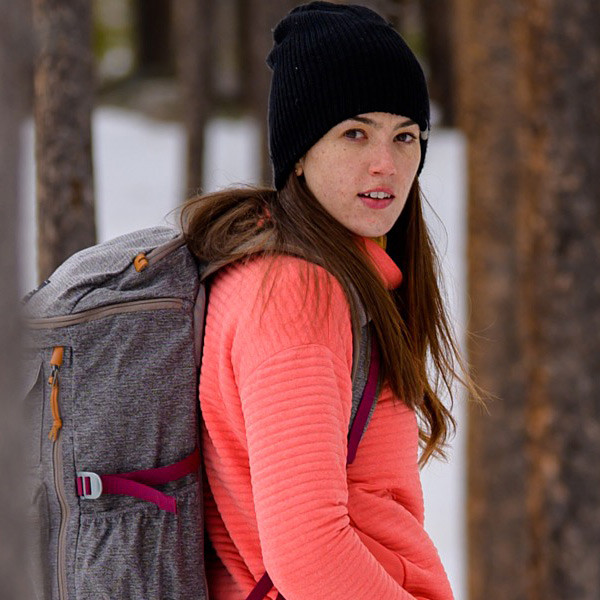
PAIGE CLAASSEN
Eddie Bauer Rock Climbing Guide
Paige Claassen holds an impressive list of sport climbing accomplishments around the world, from first ascents in South Africa to 5.14d ascents in the United States. She typically chooses iconic lines that represent benchmarks in the sport and are rarely repeated due to their difficulty and the level of technical skill they require.
How to get into rock climbing?
I would say nowadays the gym is a great place to start. It’s really accessible to just- every city, every town has a climbing gym now. Just pop in, you can get instruction if you want, or you can just play around. The gym is basically an adult playground. And you can just go have fun, scramble around, and kinda learn the movement. Meet some friends, it’s really social. And then if you wanna take it outside, the gym is just a great place to start and build those skills.
What to wear rock climbing?
It’s a great question. You don’t actually need very technical gear to go rock climbing. My favorite combo is leggings and a tank top. If you’re a dude you could wear surf shorts and a tee shirt. Something simple, something comfortable, something stretchy. You do build a lot of body heat, so shorts and tank tops are nice. Nothing too heavy. Just be comfortable.
How to get better at rock climbing?
Rock climbing’s one of those sports where you just gotta practice. And repeat over and over and over. There’s lots of cross training you can do, but honestly, I just recommend climbing as much as you can. Get in the gym, get outside on different rock styles and try and think about what you’re bad at. If your fingers get really tired during a session, maybe try working on your crimp strength. Grabbing smaller holds. If your forearms get tired really easily, do longer routes to get pumped. You gotta suffer before you can get better I guess.
What is climbing slang?
I mean, there’s a lot of climbing terms that aren’t slang to climbers, like if you flash a route, it doesn’t mean like woo-hoo! It means that you did the route on your first try but you did have previous information about the route. Beta’s another good one. That’s like when someone’s looking at a wall and they’re like, they’re kind of like figuring out how the climb goes, figuring out the beta. Choss is like the rock isn’t very good. Or, you could say ugh that route was chossy. Which either means it was crumbly rock or poorly set in the gym. I don’t know. You just didn’t like it. If you redpoint a route, it means you worked on it for a period of time and then sent it. Sent is you climbed it from the bottom to the top without falling or hanging on the rope. Or if it’s a boulder, from the ground to the top of the boulder, no falls. Yeah.
How to train for rock climbing?
This is my favorite part of the sport. I actually love training. Unlike suffer sports, in climbing you just get to go into the gym and play. I’m really bad at power, so I’ll just go into the bouldering gym and try really hard moves. So I wanna be falling as much as possible. If you’re not falling, you’re not trying things that are hard enough, and you’re probably not gonna get better. So just fall a lot.
What is bouldering rock climbing?
First of all I would say it’s just bouldering. And bouldering is where you’re climbing a short distance and then falling onto a mat. So you don’t have any sort of rope or protection. You’re just climbing maybe 20 feet and falling onto a really soft mat. When you’re outside you have to take a crash pad, like a mat you carry on your back, lay it on the ground, and that’s what you fall onto. It’s like the simplest form of climbing.
Why rock climbing?
Because it’s a great way to beat your head against the wall.
What is a pitch in rock climbing?
A pitch is a single rope length. You have your rope. Ropes come in a number of different lengths. Routes can range from 50-feet to you know really tall, but let’s say 200-feet. So one rope length and then if it’s a multi-pitch, you stop at an anchor, your partner climbs up, and then you do the next pitch. So you’re basically resting in between each pitch. I do sport climbing so it’s just single pitch. You get to the top and then you lower to the ground, which is the best ’cause you can get snacks.
How tight should climbing shoes be?
Good question. This varies a lot. If you’ve climbed for a long time you downsize your shoes a whole lot. Oddly, shoes go off of the European sizing system, so I wear a 40 in Approach shoes or tennis shoes, and a 36 and a half in climbing shoes. It’s three and a half sizes down. I downsize a lot. Some people downsize more. But I like my toes to be a bit curled, and really at the front of my climbing shoes. So kinda fits like a really snug sock. It shouldn’t be super painful because that’s gonna prohibit your climbing. But when they’re brand new they do hurt quite a bit, it takes a day or two to break in. But if you’re just starting out, or if you’re doing longer climbs, I would go for a comfier shoe. Something you can wear for like 30 minutes or an hour at a time. But definitely take your shoes off in between climbs.
How dangerous is rock climbing?
I would say not very if you’re doing it correctly. Obviously there’s a lot of different variables, and types of rock climbing, but there’s equipment that’s there to keep you safe. You have a harness, you’re tied into a rope, if you use the equipment correctly and your partner is competent, then it’s very safe. Obviously you have to be aware of rock fall, loose rock, the weather, and then if you’re bouldering, you fall to the ground so there’s more risk to your ankles. If you’re trad climbing, you have to make sure your protection is placed really well. There’s a lot of answers to that, but in general, use your equipment properly and it’s super safe.
What is the rock climbing rating system?
This is complicated. Because every country has their own rating system. And then every style of climbing has a different rating system. So in the United States, in route climbing, which is with a rope, you’ve heard of second-class, third-class, fourth-class, fifth-class terrain. Climbing is in that fifth-class. And then it’s assigned a number. So it’s 5.7, 5.8, up to 5.15. But then when you get into the harder grades, maybe 5.10 and up, there’s also a letter. So it breaks that number down even further. So, 5.13A is easier than 5.13D. And then you go to 14A. So A through D. But then if you’re bouldering, there’s the V-scale. So V1 through 16. In Europe, they use a number and a letter together. In South Africa and Australia, it’s just a number, up to like 36. It’s super complicated. Whichever country you’re in, just use that system and then you get a chart that’ll convert everything.
What is the hardest rock climbing rating?
I think 5.15D is currently the hardest. And V, 17? I think there’s one. We’ll see, that’ll change in like a year. What muscles does rock climbing work. Well if you’ve never rock climbed and you go in the gym, you’ll realize that every single muscle is exhausted the next day. It’s really a full body workout. People think of it as just upper body and your arms, but you’re really pushing with your legs, you’re stabilizing with your core, you’ll find muscles you never knew you had.
How does rock climbing chalk work?
Chalk basically dries out your skin. You don’t wanna be sweaty when you’re on the wall. And it helps give friction. The friction between your skin and the hold you’re grabbing. Makes it a lot easier.
What is belaying?
Important for safety. Belaying is your partner keeping you safe when you’re climbing with a rope. So I’m the climber, I’m tied in with a knot to my harness, and my partner has a belay device. There’s many types. But it’s basically a piece of equipment that the rope runs through that they can break in order to stop your fall. So you’re high up on a cliff, you fall, there is protection on the wall that the rope runs through, and then your belayer kind of goes into a break position and prevents the rope from continuing to run through the equipment. Really important to trust your belayer.
How do rock climbing anchors work?
When you get to the top of a climb, there’s normally like two bolts in the wall. That’s most typical. And those always stay there. It’s just so when you get to the top, you can secure yourself to the anchor and lower down and clean off all your other gear so that you don’t have to leave expensive equipment on the wall. There’s a lot of different types of anchors. Lets not get into that.
Where to go rock climbing?
Anywhere where there’s rocks near you. Or your local climbing gym. Honestly you can climb in so many places. There doesn’t have to be mountains. There’s cliff bands all over the place. Just go find some rocks. Maybe they’ll be chossy but maybe they’ll be world-class. There’s a lot of websites you can go to, www.mountainproject.com has a lot of resources on local areas, guidebooks are really helpful, or go to the gym and ask employees or people who you see climbing where they like to go climb. It’s a great way to get recommendations.
What is rappelling?
Rappelling is when you’re lowering yourself. So you’re descending the rock with a belay device to get from the top of the wall down to the ground. So if you’re doing a multi-pitch climb, you’re gonna have to repel a whole bunch of pitches to get to the ground. So it just means that rather than your partner lowering you, you lower yourself.
What are carabiners used for?
Many things. But, carabiners are a part of quick draws, which you clip to the wall and then clip your rope to when you’re lead climbing. You use a carabiner as part of your belay device system to secure your device to your harness, and then you lock it so that it can not come un-clipped. There’s carabiners on the anchors, they might be fixed that you clip into, or that you put on the anchors yourself. You use carabiners basically to secure yourself to the wall or to a piece of equipment.
What is smearing?
Smearing is a technique for your feet where you kind of press the toe of your shoe, like the flat base below the toe to the wall, but not on a foothold. So it’s like a blank piece of wall and you just press your shoe onto it as hard as you can and stand on that. So it’s when there aren’t any footholds available, but you can still make use of the friction on the wall.
How many calories does rock climbing burn?
I assume. I have no idea, but it is a strength training activity or a strength activity, so I think there’s the calories you burn while you’re climbing, but then your body takes a lot of recovery and is still burning calories while you recover. So it’s a little different from aerobic endurance activities in that way.
Is rock climbing good for you?
Definitely. It’s a great form of exercise. It works all the muscles in your body. It’s fun, it’s social. It’s a great way to meet people. I can’t think of anything that’s not good for you in climbing. Except maybe if you don’t warm up properly and you hurt yourself.
What are the hazards of rock climbing?
Well, despite it being really safe, you have to use your equipment properly. There are many scenarios where you could misuse your equipment. Like if you don’t tie your knot correctly, or you start talking to a friend and you don’t complete your knot, or you don’t check your partner before you start up the wall, or in bouldering if you fall and twist your ankle. There’s also weather that you have to pay attention to. If you’re high up on a wall many pitches up, you gotta pay attention to what the weather’s doing, if you’re safe. Rock fall is a hazard. That’s why you wear helmets if there’s rock fall danger. Also just your partner not being aware, not paying attention. That’s probably what I’m always most concerned of. Is just having a partner I really trust. There’s a lot of hazards, but you can really mitigate those risks too.
How do you get down from rock climbing?
So depends what type of climbing you’re doing. But if you’re sport climbing, you get to the top, and then your partner just lowers you down. That’s why you have a partner, someone belaying you. Sometimes the area ethic is that you should repel down, which preserves the anchors. It doesn’t put wear and tear on the equipment at the top. If you’re doing a multi-pitch climb you have to repel down many pitches. From one anchor to the next, pull your rope, put it through the anchor, repel down again, you do that 20, 30 times and you’re on at the ground.
I think rock climbing’s a great activity for everyone to try. I mean any body type, any age, doesn’t matter where you’re from, go out and try it. Get a few friends together and it’s just a great place to have fun, test yourself, push yourself. You can take it as seriously or as casual as you want. It doesn’t have to be going out there and trying your hardest. It can just be going and getting a good workout. It’s also a great way to see cool places. A lot of the places we live, there might be a hill or a cliff you’d never visit if you didn’t climb, but it takes you to this new place, and then not only do you meet other people, but you see views you’ve never seen before. And it gives you a different experience, it helps you learn about your body and kind of how your movements work and what your body’s capable of. Definitely get out there and try it. If you’re intimidated, there’s a lot of resources. If you don’t know of any climbers, going into the gym and asking for an instruction or signing up for a course. There’s lots of classes, intro to climbing, or how to belay, or women’s climbing courses. There’s all kinds of creative ones that really make it a lot less intimidating, and are a great way to meet people and get into the sport, so get out there.

